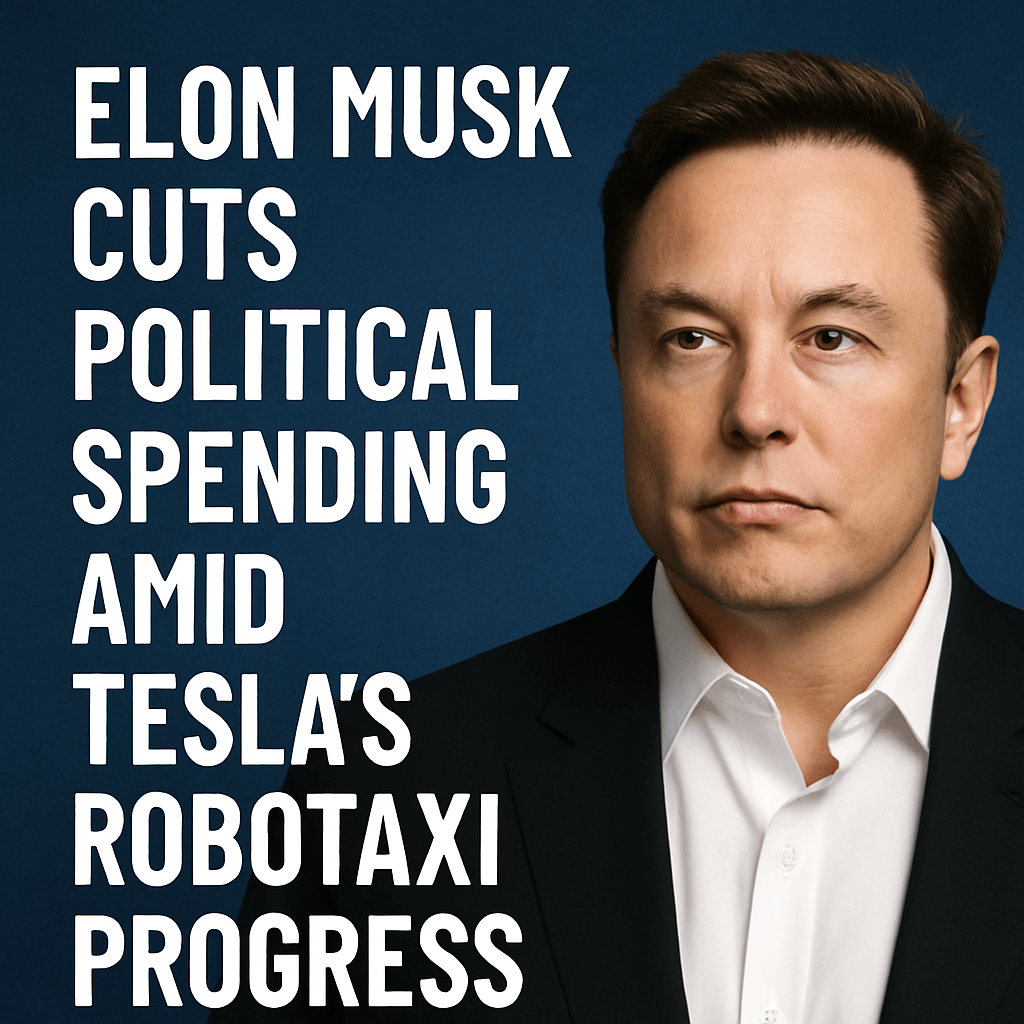Elon Musk Cuts Political Spending Amid Tesla’s Robotaxi Progress

Musk’s Shift in Political Funding Strategy
During a keynote at the Qatar Economic Forum on Tuesday, Tesla CEO Elon Musk announced that he will significantly curtail his political contributions in upcoming election cycles. Musk, who donated over $250 million to former President Donald Trump’s 2024 campaign, was asked if he’d match that outlay for the 2026 midterms. He replied:
“I think, in terms of political spending, I’m going to do a lot less in the future.”
- In early 2024, Musk was offered leadership of the Department of Government Efficiency (DOGE), a special advisory post aimed at trimming thousands of federal roles.
- Political donations must comply with Federal Election Commission regulations, including caps on individual contributions and reporting via Section 527 PAC filings.
Despite earlier statements that his role as a special government employee was “costing me a lot,” Musk reaffirmed on Tesla’s Q1 earnings call that he would remain CEO “for at least the next five years” while scaling back outside political engagement.
Financial Implications of Political Engagement
Analysts at Morgan Stanley estimate that Musk’s previous donations represented less than 1% of his net worth but generated outsized media attention and stakeholder pushback. Tesla showrooms in several U.S. cities experienced protests and minor vandalism after his high-profile backing of far-right European parties raised concerns among the EV maker’s customer base.
Market Reaction and Share Performance
Following Musk’s announcement, Tesla shares rallied 3.6% intraday before trimming gains. The stock has rebounded over 50% from a late-April trough, buoyed by:
- Easing U.S.-China trade tensions: officials are reportedly reviewing a 15% EV import tariff on Chinese automakers for a potential pilot exemption.
- President Trump’s recent Middle East tour, which secured over $1 trillion in defense and infrastructure agreements with Saudi Arabia, the UAE and Qatar—moves widely credited with boosting U.S. tech valuations.
Even so, as of May 20 Tesla’s share price remains down 12% year-to-date.
Regional EV Sales Dynamics
China-based deliveries and price cuts have partially offset weakness in Europe. In Q1, Tesla reported a 20% year-on-year decline in global EV revenues, with April European sales plunging 46% in Germany, 62% in the U.K., and over two-thirds in Denmark, the Netherlands and Sweden, according to LMC Automotive.
- Tariff headwinds: The EU’s Carbon Border Adjustment Mechanism (CBAM) and a 10% levy on non-EU EVs increased landed costs.
- Incentive rollbacks: Germany reduced its €4,500 EV subsidy to €3,000 in April.
- Local competition: Volkswagen’s ID. series and BYD’s Yuan PLUS chipped away at Tesla’s market share.
Nevertheless, Musk emphasized stronger uptake in North America and Asia Pacific, noting that “the sales numbers at this point are strong” outside Europe’s tightened regulatory environment.
Technical Deep Dive: Full Self-Driving & Robotaxi
In an interview with CNBC, Musk confirmed that Tesla’s fully autonomous Vehicle-as-a-Service (Robotaxi) will launch in Austin by end-June, followed by Los Angeles and San Francisco. Key technical details include:
- Sensor suite: Eight high-resolution cameras and ultrasonic sensors, with radar retained as a fallback.
- FSD Computer v2.5: Dual in-house 14 nm SoCs delivering 36 TOPS (trillions of operations per second).
- Neural network updates: Over-the-air model refinements powered by Tesla’s Dojo training cluster, reducing inference latency to under 25 ms.
- Localized parameter set: Region-specific driving behaviors and map data for Austin’s road geometry and traffic patterns.
The Robotaxi service aims for SAE Level 4 autonomy within defined geofenced zones, eliminating the need for a safety driver during operation.
Regulatory Landscape for Autonomous Vehicles
Texas lawmakers passed HB 2247 granting the local transportation authority authority to waive human-driver requirements for commercially deployed autonomous vehicles. In California, Tesla’s safety case is under review by the DMV’s Autonomous Vehicle Deployment Permit program, which demands detailed disengagement reports and third-party audits.
Expert Perspectives on Autonomy and Market Impact
An ARK Invest analysis estimates that a global autonomous ride-hailing fleet could capture $500 billion in annual revenue by 2030. Morgan Stanley projects each uptick in vehicle utilization adds roughly $2,000 per year per vehicle in incremental revenue for ride-hailing operators.
Outlook for Tesla’s Midterm Prospects
With evolving trade policies and potential shifts in U.S. leadership, Musk’s strategic pivot away from large-scale political donations may help mitigate stakeholder friction. Tesla continues to guide for 50% compound annual growth in deliveries over the next three years, anchored by capacity expansions at Gigafactories in Grünheide, Shanghai and Austin.